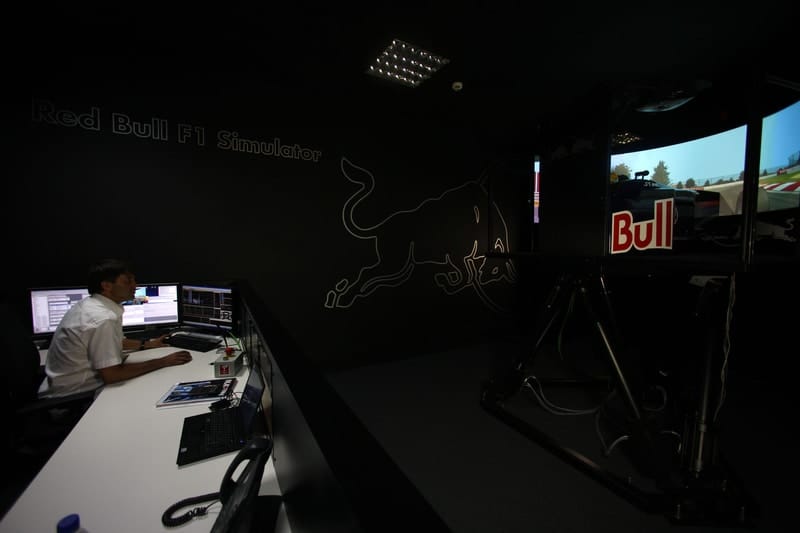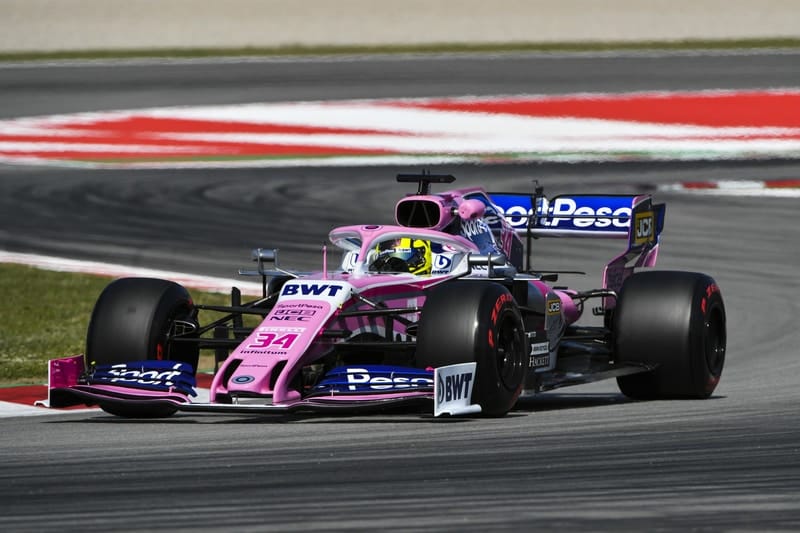Over the last two decades, the importance of virtual simulation in Formula 1 has risen exponentially. It’s used in chassis design, engine design and – most pertinently – preparing a car and its drivers for a race weekend.
In years gone by, teams would almost test perpetually; even having a designated ‘test’ team in tandem with its race-going squad. There are even myths about the lengths the testing would go to, such as Michael Schumacher allegedly flying to Scuderia Ferrari‘s famed purpose-built testing facility Fiorano in the middle of a race weekend to try out new configurations – before flying back to complete the weekend. Presumably winning, too. A heavy restriction on track testing, first introduced in 2003 by the FIA to stop running costs spiralling further, ended this exhaustive schedule. The need for this, and the further revisions made in ’07, ’10 and ’13, has been exacerbated by an ever-expanding world championship calendar that reaches a record 22 races for ’20.
Like all measures introduced into F1, teams have found a way round of circumambulating this. Albeit an expensive one. Inside every team’s factory will be a simulator room, consisting of a multitude of computer monitors and units, a 180-degree surrounding cinema screen and…an F1 monocoque bolted onto a hydraulic platform with a real F1 steering wheel.
Both full-time race and test drivers can use this facility as often as is needed to improve their and the team’s understanding of the car and any track on the calendar, including 2020’s new additions such as the returning Circuit Zandvoort and F1 debutant Vietnam’s new Hanoi Street Circuit.
The engines used vary among the grid. Some teams use rFactor Pro by producers Studio 397, while others use Kunos Simulazioni‘s Assetto Corsa and other existing titles. The base versions of the softwares, and even some of the cars used within them, are available to the widespread consumer market.

Here, engineers will control the programmes to simulate whatever they need. Emergency situations such as mechanical failures and punctures can be simulated – in a much safer and more economical environment. Different car configurations can be tested in order to help the race team extract the maximum out of the package, with the data relayed to them almost instantaneously.
This is, as Racing Point F1 Team test and simulator driver Nick Yelloly explains, essentially the new ‘test’ team – but doesn’t put anywhere near the same strain on limited mechanical parts, running costs and travel expenses.
“I’ve been with the team since 2014 and I have worked mostly on race support and car development since then,” Yelloly told The Checkered Flag.
“I think I spend about 60 to 70 days a year in the simulator. The work can vary from simulator development, to car development and testing different setups.
“With race support, you are basically an extension of the Free Practice results that they achieve. We will then get test items that they want us to look into, directions they want us to take and we’ll go through those setups and send them back to the track.
“We also get feedback and the comments from the drivers and make sure that the track team is ready to go into qualifying with all the information they need – because after qualifying, you go into parc fermé [meaning only a few changes to the car can be made without incurring a grid penalty].”
Yelloly, a works driver for BMW Motorsport in its GT division with previous experience in the GP2 Series and the Porsche Supercup, adds that he will be present at Racing Point’s Silverstone base at all the F1 race weekends he is free for – even if the team has a smooth Friday.
But, in the event of a difficult start to the weekend, the simulator becomes critical. Alfa Romeo Racing and Ferrari junior driver Antonio Giovinazzi spent hours on the Friday evening of the 2018 Canadian Grand Prix helping Ferrari understand why its car was so skittish around the Circuit de Gilles Villeneuve, and looking for solutions. The result from the comprehensive study was pole position and a race victory for Sebastian Vettel, truly proving the worth of the simulator.
“It won’t just be if they’ve had a poor Friday, I’ll be in no matter what,” says Yelloly.
“I was in for Singapore and Russia [recently], so every race weekend I’m not racing I’ll be committed to the simulator to help out and try different combinations. It’s nice to feel part of the team and like you’re working towards them getting a good result.
“We put a baseline setup on the car and make changes depending on the track usually. So we look at corner radius, straights and so on before we try different options,” he continued.
“We’re starting the setup before the weekend because we have more data available than they have at the track. From there, the track team will look at the conditions and things like track roughness.
“The simulator is now such a big part for all the teams. It’s not just for setup but also with recovery systems and getting used to a new track if you haven’t been there before. So it’s becoming a bigger part of motorsport in general.”
The 28-year-old’s job also provides opportunities to drive the real car during the few regulated in-season test days. May’s test at the Circuit de Barcelona-Catalunya, in collaboration with F1’s sole tyre supplier Pirelli Motorsport, was Yelloly’s first taste of F1 action in over three years.
Given the vast array of changes made to the rulebook since 2015 regarding car design and performance, the whole experience could be a little too daunting – but Yelloly said that the re-adjustment period took a matter of laps, thanks to his extensive simulator work. He completed 194 laps over two days of testing, setting the eighth fastest time on both days.

“I actually hadn’t driven a single seater since the end of 2015,” he revealed.
“The first acceleration out of the pits and the first lap or so felt very quick. My brain was trying to keep up! But on my second run I felt really comfortable and built up to a good pace, which we had the ability to do.
“It didn’t take too long, probably because I knew what the car was going to do through the thousands and thousands of laps I’ve done on the simulator. It all helps, because car to sim isn’t actually a huge difference. The car reacts in a similar way, so I had what it would feel like already ingrained in my brain.
“The only things you have to add are the physicality and the fear. You just don’t get scared in a simulator, but it wasn’t as big of a shock as I thought it would be.”
As mentioned previously, Yelloly’s on-track career with BMW can prevent him from helping the team on race weekends, but he says that there are ample options when he isn’t available. Ex-Racing Point driver Esteban Ocon, who joins the Renault F1 Team for ’20, has spent ’19 back with Mercedes AMG Motorsport as a reserve driver – and, given Racing Point’s power unit ties with the reigning champions, has returned to the simulator a few times this season.
“There have been quite a few F1 weekends this year that I haven’t been available to do, which is a shame, but the racing comes first.
“I’ve done 12 or 13 races with BMW this year, including the Nordschleife [24 Hours of Nürburgring], the Suzuka 10 Hours [and the Chinese GT Championship], so I’ve missed five support weekends this season. But until recent announcements, Esteban was also helping.
“So if he wasn’t with Mercedes he’d help, and there are also some Mercedes juniors who are floating around if they’ve been signed off as good enough to help. It can’t always just be me, but I’d still say I do 95% of the work – or even more,” Yelloly concluded.



